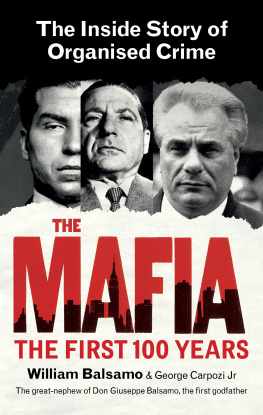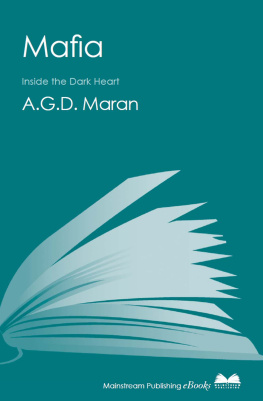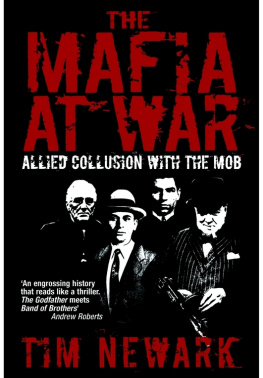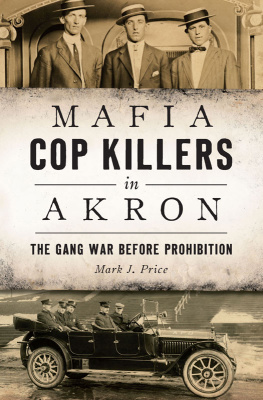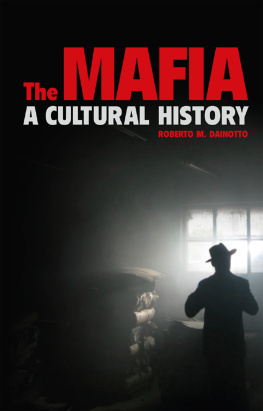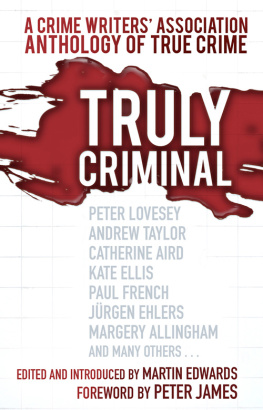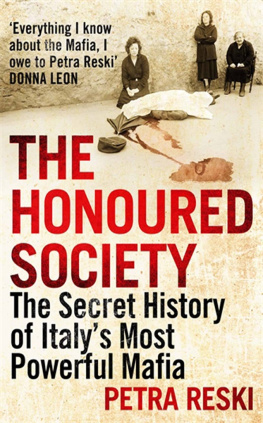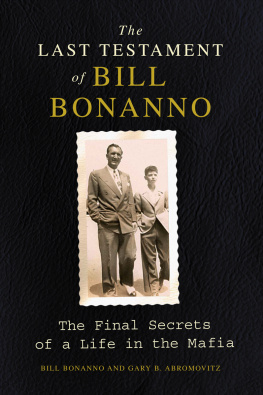

Contents
About the Authors
William Balsamo
William Balsamo is the great-nephew of Don Giuseppe Battista Balsamo, the first godfather.
George Carpozi Jr.
George Carpozi Jr. is a journalist, biographer and writer who has worked on the New York Journal American and the New York Post.
To my children, Connie, Ann, and Joseph, and Helen and to my brothers, John, Eugene, Joseph, and Dominick Balsamo.
WILL BALSAMO
To my grandchildren, Elizabeth and Meghan McGrath and Wiley Griffin III who I hope will live in a Mafia-free world in the next century.
GEORGE CARPOZI JR
Introduction
An invisible government under the whip of the Mafia the government of syndicated crime has enveloped much of the Western world like a cancerous growth, stubbornly defying the prognosis and treatment of law enforcement agencies.
It is a government so insidious that it has subjugated millions of innocent persons to servility.
The plunder cascading into the coffers of this empire amounts to as much as ten percent of the national income.
Millions of Americans knowingly and unknowingly are compelled to contribute a part of their hard-earned wages or income to the big business of international crime.
The public pays its tribute to the sprawling, voracious monster of syndicated crime in many ways: in the clothes it wears, in the food it eats, in the union dues it pays, in the music it listens and dances to, in the cigarettes it smokes, in the gasoline that fuels its cars, in the shipments of its merchandise and parcels, in the buildings and bridges it erects. In innumerable other ways the public is made a helpless sucker by the common denominator of greed and avarice upon which this invisible government gorges itself.
Organised gangs operate largely unmolested in interstate commerce and industry. The criminals behind this vast conspiracy are descendants of the underworld wars of the Prohibition Era; they are people of varying talents, qualities, and responsibilities banded together in a surreptitious conspiracy which, for the most part, is run like many large, diversified industries or businesses.
Unlike the old, bloody roaring twenties days when bootlegging was one of the chief sources of income for the Mob and gunfire tattooed the syndicates enforcement aims, todays organised criminals shy away from violence and murder as much as they can.
Rather than engage in blatant and belligerent lawbreaking, todays underworld take refuge in the self-respecting guise of legitimate entrepreneurs; they have ably organised themselves in much the same manner as giant corporations.
In the great complexity that is organised crime, one ruling body stands firmly entrenched at the top of the enormous roster of mobsters. It imposes onerous rules and regulations; it exercises tremendous pressure to maintain control.
This is the Mafia.
No single underworld group has survived the ravages of time nor the onslaught of crime fighters as well as this, most extensive, most effective criminal body in the world.
There are many who feel that the power of the Mafia does not prevail any longer, that Mafia is just a word loosely used by sensationalist headline writers to boost the sales of newspapers, magazines and books, to boost box office sales, and to hype the Neilsen ratings for network television shows.
The authors maintain that the Mafia does exist. The chapters that follow will chronicle the rise, and rise, and rise of this sinister underworld government. It does not exist as a colossus of crime with branch offices in every major city. Nor does it work with IBM or push-button efficiency, as some may envision.
The Mafia today is a relatively loosely knit group who work together for their mutual well-being and continued dominance of criminal objectives and who share in a way of life that brings its followers an understanding of trust for one another.
Their efforts are concentrated, to a very large extent, in narcotics. The Mafia is the principal and dominating agent in drug trafficking, and the rise of such Johnny-come-lately dealers in opiates and sopophoric agents as Columbians, Haitians, Puerto Ricans, Chinese, and other newcomers to the field, have not lessened its domination.
The Mafia is also deeply involved in illicit activities such as gambling, the coin machine rackets, juke box businesses, pizza parlor operations (which are also used as fronts for drug trafficking and money-laundering), prostitution, extortion, smuggling, and counterfeiting.
Then, too, the Mafia has become deeply entrenched in the control over such lucrative legitimate ventures as trucking, restaurant supplies, laundry services, restaurants, night-clubs, labor unions, garbage hauling, beer and soft drink distributorships, garment manufacturing, ready-mix concrete and many others.
They have intruded into the world of sports. Men from the crime kingdom exercise powerful influences over boxing, harness racing, dog races and other professional sports.
As the Mafia spreads into each new area, the tribute to it grows accordingly at the expense of average, law-abiding citizens.
The Maffia (as it was originally known) did not begin as a criminal agency. Its infamous web has only been spun over the last century. Prior to then, it was an underground patriotic society, born more than six hundred years ago on the Mediterranean island of Sicily, the toe of Italys boot.
It rose to prominence in the thirteenth century as a resistance group to foreign oppression. Through the centuries Sicily had been invaded repeatedly by Arabs, Normans, Germans, French, and Spaniards. The underground organisation was formed to conduct warfare against these intruders. For hundreds of years the society was held together only by an indomitable spirit of patriotism to repel all foreigners.
We chronicle the transformation of this early organisation, banded together by a sense of nationalism, into its present-day configuration as a criminal colossus unmatched by any other body of criminals anywhere.
The advent of Prohibition in 1920 gave rise to the Mafia as we know it today in the United States. Many Mafiosi who had emigrated here since the turn of the century and dealt in shakedowns and extortion of the hapless Italian newcomers became aware of the lucrative rewards in bootlegging and rum-running, which opened the way to a climb to power. Many of the hardy survivors of those early roaring twenties days of mobsterism emerged as overlords of organised crime in the thirties and kept their power into the forties, fifties, sixties, and even the seventies.
Among them are: Frank Costello, Vito Genovese, Michele Mike Spiranda, Tony Accardo, Joseph Profaci, Michael Mike Spinella, Joseph Joe Adonis Doto, Thomas Three Finger Brown Luchese, Anthony Tony Bender Strollo, Albert Anastasia, and Anthony Little Augie Pisano Carfano.
Contrary to general belief, the Mafia in the last sixty years has not restricted its membership to Sicilian emigrants or their descendants, nor even to those of Italian extraction. Members of todays Mafia hierarchy include, for example, Meyer Lansky and Abner Longie Zwillman.
Membership in the Mafia is achieved through diverse ways: by birth, marriage, or through the sponsorship of relatives or close friends.
Members are selected for their particular aptitudes and abilities in the toils of the underworld.
Those with unusual talents who can serve to further the Mafias aims and controls in the rackets are initiated as brothers regardless of national origin. Nationalistic sentiment is set aside for someone with a genius for extending the perimeters of the Mafias racket preserves and enriching its coffers.
Next page
